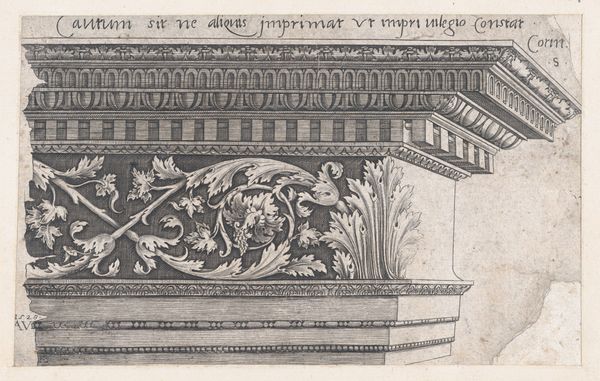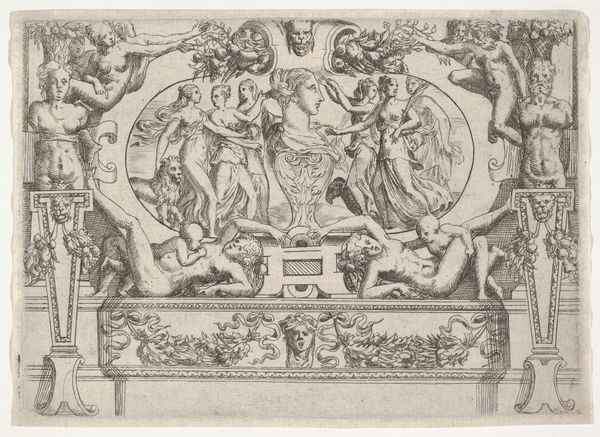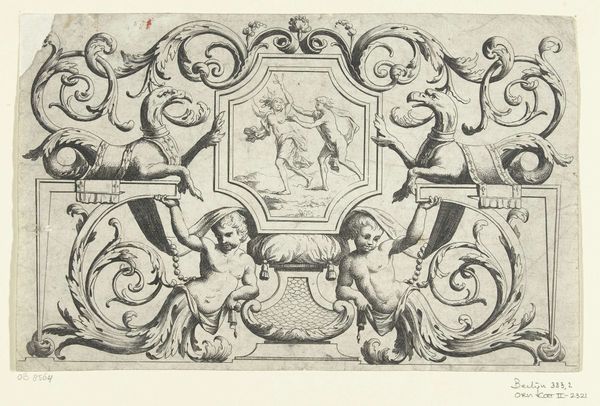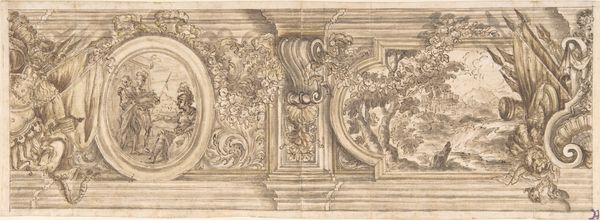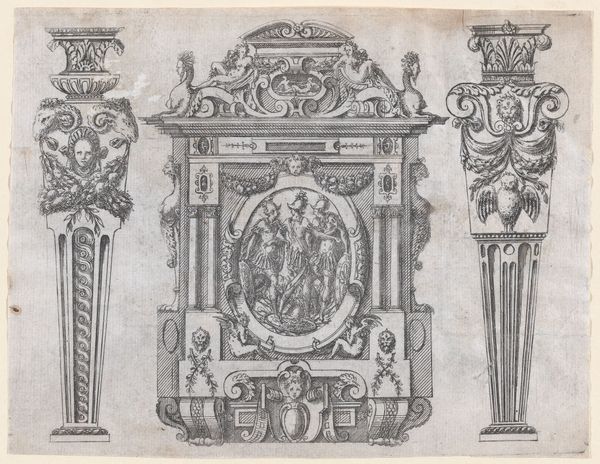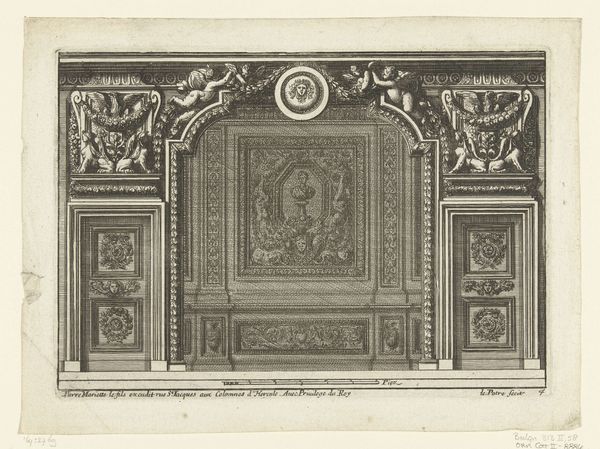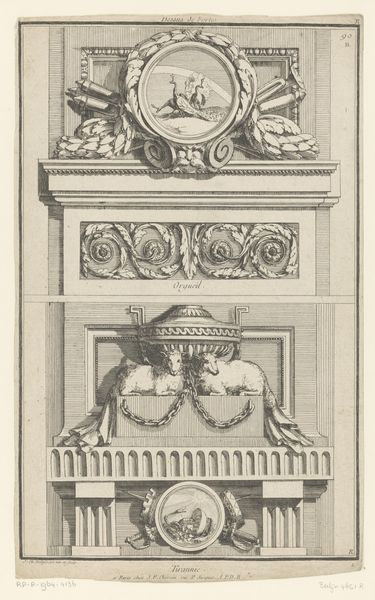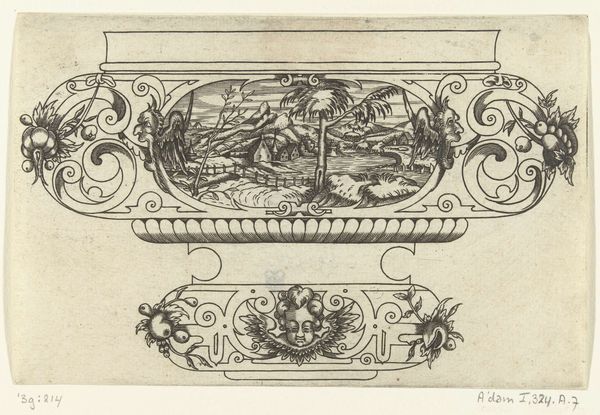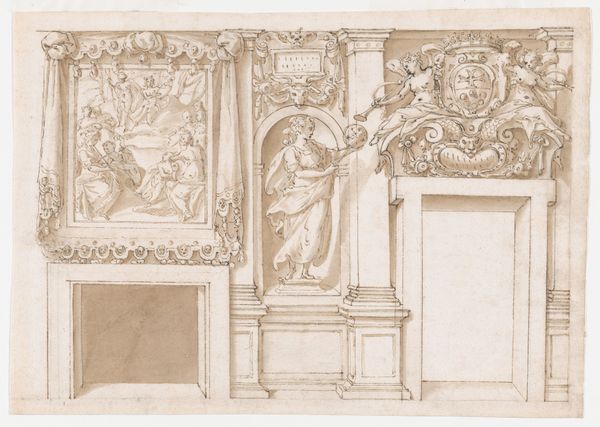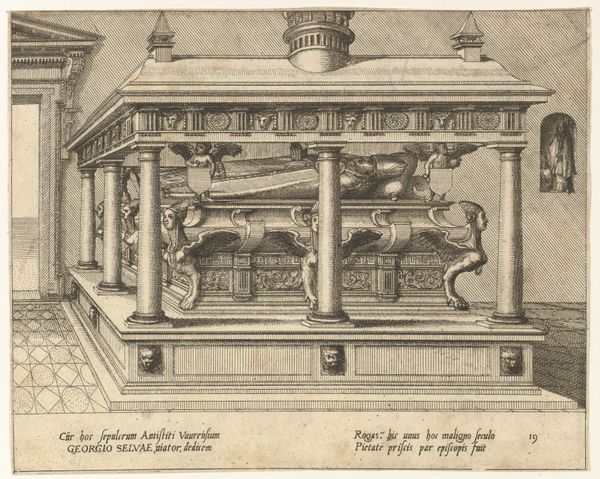
Speculum Romanae Magnificentiae: Ionic Entablature 1528
0:00
0:00
drawing, print, engraving, architecture
#
drawing
# print
#
form
#
11_renaissance
#
geometric
#
line
#
northern-renaissance
#
engraving
#
architecture
Dimensions: sheet: 4 9/16 x 7 5/16 in. (11.6 x 18.5 cm)
Copyright: Public Domain
Curator: Agostino Veneziano created this engraving, "Speculum Romanae Magnificentiae: Ionic Entablature," around 1528. It’s currently part of the Metropolitan Museum of Art's collection. Editor: Intricate! My first impression is one of intense detail; it almost feels tactile, like you could run your fingers along the carved stone even though it's just lines on paper. It’s calling out the glory days. Curator: The "Speculum Romanae Magnificentiae"—the "Mirror of Roman Magnificence"—was actually a publishing project encompassing hundreds of prints showing ancient Roman architecture and ornament. Consider the labor involved; prints such as these were instrumental in circulating visual information about classical design. Editor: Absolutely. It’s like an early architectural magazine, a mood board of grandeur. And this entablature, with its leafy details and bold geometry... there's such a beautiful tension between the organic and the rigidly structural. Curator: Indeed. Look at the dense interweaving of foliage and classical motifs—vines, flowers, and precisely rendered moldings. We also see inscriptions, further connecting the visual with the textual and asserting ownership or privilege concerning its printing. The inscription "Cavuum sir ne aliquis imprimat vr jmpri vilegio consrar" acts like a copyright notice for its time. Editor: Almost a warning against architectural plagiarism! I love the sheer audacity of capturing the monumental in this delicate, repeatable format. There’s a quiet rebellion there; breaking down barriers. Imagine the conversations this single sheet could spark among builders, patrons and dreamers. Curator: These prints were essential for builders and designers in other parts of Europe to glean inspiration from Rome, particularly during the Renaissance. These accessible printed forms democratized classical architectural vocabulary. Editor: Knowing its purpose and context makes the whole artwork even richer. Now I feel like I’m looking at the DNA of Renaissance architecture spreading across Europe. Thanks to the hands who toiled on it. It’s humbling, really. Curator: It is. And through meticulous process, "Speculum Romanae Magnificentiae: Ionic Entablature" transcends its utilitarian function to become an artistic document of cultural transmission. Editor: What began as measured design transforms itself through technique into an almost subversive carrier of artistic ambition. Now, I perceive less hard angles, more softly swirling innovation.
Comments
No comments
Be the first to comment and join the conversation on the ultimate creative platform.
